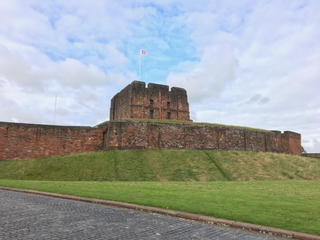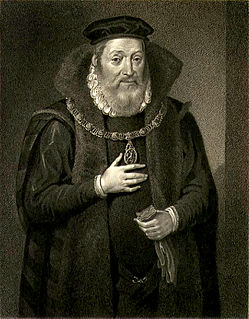Contents
| |||||
| Centuries: | |||||
|---|---|---|---|---|---|
| Decades: | |||||
| See also: | List of years in Scotland Timeline of Scottish history 1609 in: England • Elsewhere | ||||
Events in the year 1609 in Scotland .
| |||||
| Centuries: | |||||
|---|---|---|---|---|---|
| Decades: | |||||
| See also: | List of years in Scotland Timeline of Scottish history 1609 in: England • Elsewhere | ||||
Events in the year 1609 in Scotland .


1609 (MDCIX) was a common year starting on Thursday of the Gregorian calendar and a common year starting on Sunday of the Julian calendar, the 1609th year of the Common Era (CE) and Anno Domini (AD) designations, the 609th year of the 2nd millennium, the 9th year of the 17th century, and the 10th and last year of the 1600s decade. As of the start of 1609, the Gregorian calendar was 10 days ahead of the Julian calendar, which remained in localized use until 1923.

James Stewart, 1st Earl of Moray, a member of the House of Stewart as the illegitimate son of King James V, was the regent of Scotland for his half-nephew, the infant King James VI, from 1567 until his assassination in 1570. He was the first head of government to be assassinated by a firearm.

The title Earl of Morton was created in the Peerage of Scotland in 1458 for James Douglas of Dalkeith. Along with it, the title Lord Aberdour was granted. This latter title is the courtesy title for the eldest son and heir to the Earl of Morton.

Lord Torphichen or Baron Torphichen is a title in the Peerage of Scotland. It was created by Queen Mary in 1564 for Sir James Sandilands, with remainder to his heirs and assigns whatsoever.

Carlisle Castle is in Carlisle, in the English county of Cumbria, near the ruins of Hadrian's Wall. The castle is over 900 years old and has been the scene of many historical episodes in British history. Given the proximity of Carlisle to the border between England and Scotland, it has been the centre of many wars and invasions. During the Jacobite Rising of 1745–6, Carlisle became the last English fortress to undergo a siege. The castle was listed as a Scheduled Ancient Monument on 7 August 1996.
Alexander Hume was a Scottish poet who served as Moderator of the General Assembly of the Church of Scotland in the early 17th century.

James Hamilton, Duke of Châtellerault, 2nd Earl of Arran, was regent of Scotland during the minority of Mary I, from 1543 to 1554 when he lost the regency to Mary of Guise, the queen's mother.

The title Earl of Dunbar, also called Earl of Lothian or Earl of March, was the head of a comital lordship in south-eastern Scotland between the early 12th century and the early 15th century. The first man to use the title of Earl in this earldom was Gospatric II, Earl of Lothian, son of Gospatric, Earl of Northumbria. It descended to George de Dunbar, 11th Earl of March, who was forfeited by parliament of his titles & estates in 1435, and retired into obscurity in England. His son Patrick retained a barony at Kilconquhar in Fife.
The Lord Warden of the Marches was an office in the governments of Scotland and England. The holders were responsible for the security of the border between the two nations, and often took part in military action. They were also responsible, along with 'Conservators of the truce', for administering the special type of border law known as March law.
The Lord Chancellor of Scotland was a Great Officer of State in the Kingdom of Scotland.

Thomas Hamilton, 1st Earl of Haddington, designated before his peerage as 'of Drumcarny, Monkland, and Binning', was a Scottish administrator, Lord Advocate, judge, and Lord Lieutenant of Haddingtonshire.
Baron Scrope of Bolton was a title in the Peerage of England. It was created for Sir Richard le Scrope as a barony by writ on 8 January 1371. It became dormant on the death of the 11th Baron in 1630 without legitimate children.
John Hamilton, 1st Marquess of Hamilton (1540–1604) was the founder of the long line of the marquesses and dukes of Hamilton.
Alexander Gordon was a 16th-century Scottish churchman who was successively archbishop of Glasgow, titular archbishop of Athens, bishop of the Isles and bishop of Galloway.

Thomas Scrope, 10th Baron Scrope of Bolton was the son of Henry Scrope, 9th Baron Scrope of Bolton and Margaret Howard, daughter of Henry Howard, Earl of Surrey and Frances de Vere.
Events from the year 1700 in the Kingdom of Scotland.
Sir Patrick Hume of Polwarth and Redbraes was a Scottish courtier and makar.
John Seton, Lord Barns was a Scottish diplomat, courtier and judge.
Jean Fleming, Countess of Cassilis (1553/4–1609) was a Scottish noblewoman and courtier at the court of James VI of Scotland, and a survivor of domestic violence.

Margaret Douglas, Countess of Arran and Duchess of Châtellerault was a Scottish aristocrat.